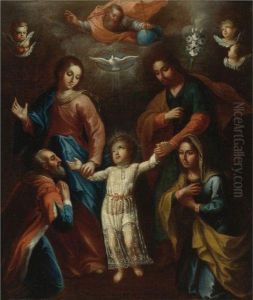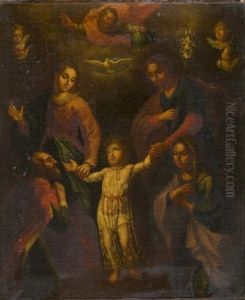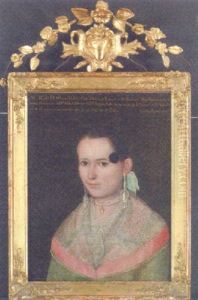Ignacio Maria Barreda Paintings
Ignacio Maria Barreda was a prominent painter during the late colonial period in Mexico, then known as New Spain. Born in 1749, Barreda's artistic talent emerged in an era when Mexican art was heavily influenced by European styles and techniques, particularly from Spain.
Barreda is best known for his religious paintings, which were created for various churches and religious institutions. He was a product of the Academy of San Carlos, which was the first major art academy in the Americas, founded in 1781 in Mexico City. The academy played a significant role in shaping the artistic landscape of the region by promoting Neoclassicism and providing formal training to artists, which included drawing, painting, sculpture, and architecture.
His work reflected the transition from Baroque to Neoclassical art styles, a change that was occurring in European art of the time. Neoclassicism sought to return to the aesthetics of classical antiquity and was characterized by clarity, order, and symmetry. Barreda's paintings exhibit these qualities, along with a certain adherence to the dramatic expressions of the Baroque era.
Despite his contributions to religious art, little information is available on the specifics of his life and career. This scarcity of personal details is common for many artists of the colonial period in Latin America, whose lives were often not well-documented. However, it is known that his works were highly valued and that he held a reputable position within the artistic community of New Spain.
Ignacio Maria Barreda passed away in 1809. While he may not be as widely recognized as some of his European contemporaries, his art remains a testament to the rich cultural and artistic heritage of Mexico during the colonial era. His paintings continue to be studied and admired for their beauty and historical significance, contributing to our understanding of the art and culture of the period.


